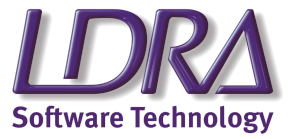Complying with the latest coding standards
Staying current with programming languages, their features, and associated coding standards is crucial for various reasons. New project specifications often require them, and potential new recruits are eager to work with the latest technologies. At LDRA, we don’t just keep up with these standards; we help define them.
LDRA tool suite 10.3.0 enables you to leverage the latest guidelines and language features for your projects, including MISRA C++:2023 and CWE-4.14. It supports threading and multicore environments, and C++17 features such as Lambda operation restrictions.
Enhance your review process efficiency by viewing source files with or without violation and coverage annotations. Generate reports against standard guidelines, apply code review baselines, and adhere to MISRA Compliance:2020, including rule recategorization and disapplication.
A tool suite tuned to your industry
Despite the many similarities between functional safety and safety-by-design standards, there are variations in detail and terminology. Our productivity packages tune the tool suite to your industry – because you don’t care about cars if you’re designing medical equipment, or vice versa.
In addition to providing the appropriate features and configurations for the standards used within your sector, in many cases Productivity Packages also produce Compliance Reports that reflect the demands of those standards.
Efficient and effective testing with automated test vector generation
The LDRA tool suite v10.3.0 supports extended automated test-vector generation making it more applicable to real-life situations. Requirements-based testing (RBT) involves automatic generation of test vectors which will exercise the code to check software functionality. Automated Boundary Value Testing (BVT) ensures the thorough evaluation of critical edge cases, while Equivalence Class Testing (ECT), automates the creation of optimised sets of test cases. Finally, automated unit- and integration-level fuzz testing play an essential role in contributing to secure coding practices, reinforcing the reliability and safety of the software.
Getting to grips with large and dispersed projects
Exceptional teams make a significant impact and consistently deliver superior performance over time. In project management, success is typically gauged by completing tasks on time, staying within budget, delivering all planned features, meeting quality standards, and achieving the expected business benefits. However, modern project teams often face challenges due to their size, dispersion, diversity, and complexity, which can’t be managed with traditional project management methods alone.
The LDRA tool suite v10.3.0 supports LDRAvault - a management tool whose web-based interface consolidates reports and results such as code reviews, code coverage analysis, and unit testing, providing a centralized view of all verification activities. Key features of LDRAvault include visualizations like heat maps and trend graphs to identify and address issues, support for continuous integration and continuous delivery (CI/CD) workflows to ensure upto-date access to software quality analysis, and the ability to maintain project snapshots and user-defined milestones.
Revolutionizing time budgeting
The LDRA tool suite boasted proven, effective timing capabilities long before MCPs (Multicore Processors)rose to prominence. Tool suite v10.3.0 leverages those capabilities to support execution time analysis – an intuitive approach that empowers developers to analyse Worst-Caste Execution Times (WCET) and is equally applicable to single core devices and MCPs The LDRA tool suite v10.3.0, in response to customer feedback the reports are supplemented with enhanced labelling and can be created from the command line.
Justifying gaps in structural coverage
Sometimes 100% coverage is unattainable, or the effort needed to achieve it would be disproportionate. For example, defensive programming can often result in code that would not be expected to execute under normal circumstance - checking that a pointer is not null, for example. LDRA tool suite v10.3.0 supports a mechanism that allows missing coverage to be justified, and for that to be reflected in reporting

André De Ceuninck
Software Quality | Testing | Certification
Do you have any questions regarding this topic?
